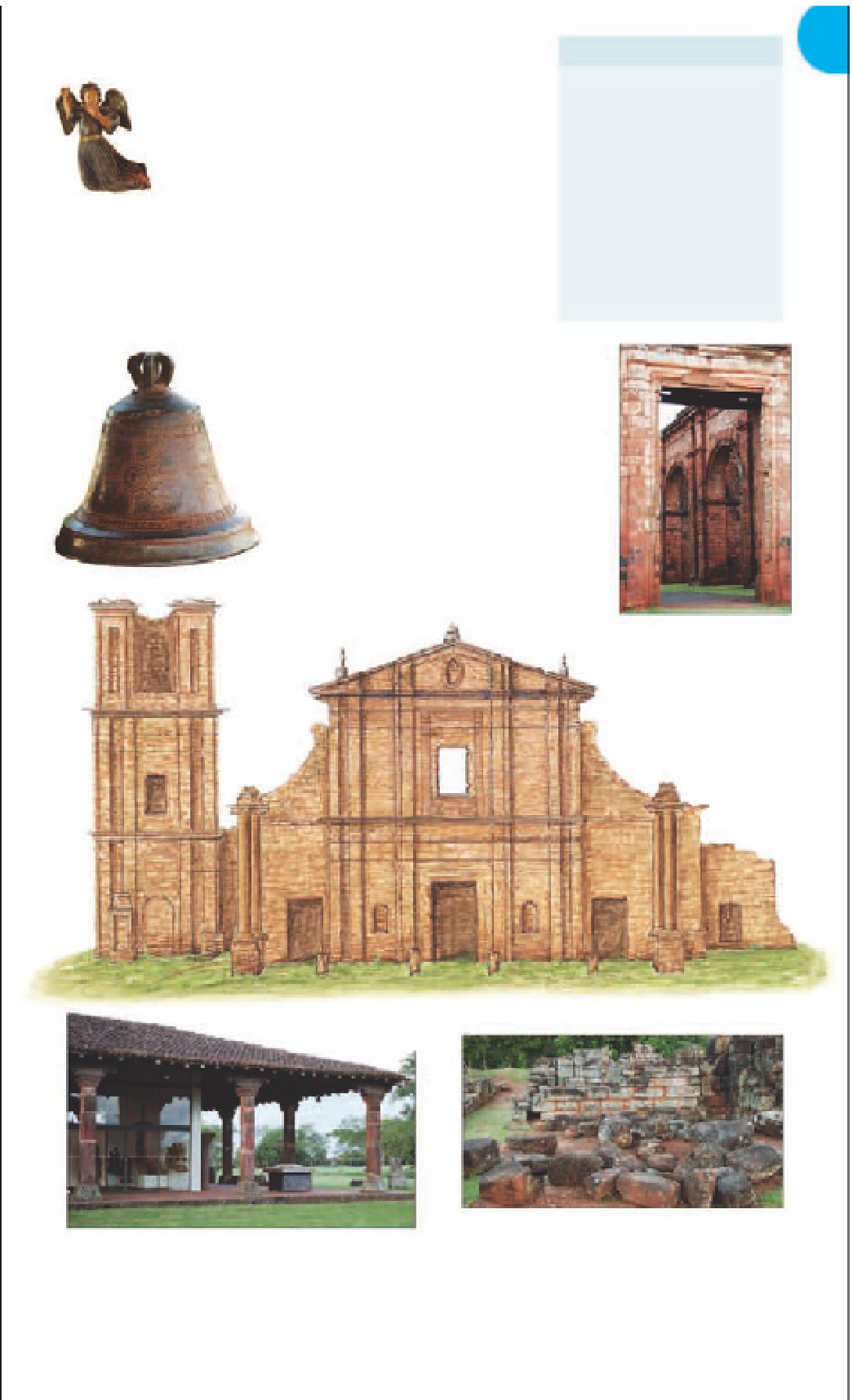Travel Reference
In-Depth Information
São Miguel das Missões
w
Surviving through centuries of neglect, the São
Miguel Mission presents a fine example of the
Guaraní-Baroque style, a blend of Iberian and
indigenous architectural elements. These
influences are visible in architectural
details, particularly in the carved
stonework and in the wooden sculptures
housed in the museum. The mission was
designated a UNESCO World Heritage Site in 1984.
Although the area around São Miguel has been given
over to farmland, the mission retains an air of isolation.
VISITORS' CHECKLIST
São Miguel.
@
from Porto
Alegre to Santo Ângelo, then
bus.
n
(055) 3381 1294.
&
_
Festa do Gaúcho (some
Sunday afternoons).
www
.
rotamissoes.com.br
Museu das
Missões
Rua São Nicolau s/n.
#
9am-noon & 2-6pm daily
(winter), 9am-noon & 2-8pm
daily (summer).
7 - =
Sound & Light Show
7pm
(winter), 9pm (summer) daily.
&
Wooden
sculpture
The Bell
The mission's bell was not
only rung as a call to
prayers, but also to
warn of attacks by
roving gangs hunt-
ing for slaves.
Inner Corridors
A network of
corridors give a sense
of the extent of the
original mission site,
which at its height
housed 4,000 people.
The façade
is a replica of Il Gesù,
the Jesuits' mother church in
Rome. Only one of the two
original towers remains intact.
Brick and stonework
,
made from local
materials, was mainly
used in the mission's
construction.
Entrance
Ruins of Jesuit Buildings
Little remains of the workshops, school
rooms, cloisters, and living quarters
of the Jesuit mission. However, it is
still possible to make out their distinct
areas in the ruins.
Museu das Missões
Designed in 1937 by Lúcio Costa, this early
Modernist building was inspired by Jesuit-
Baroque architecture. The museum houses
statues and other relics excavated locally.






































